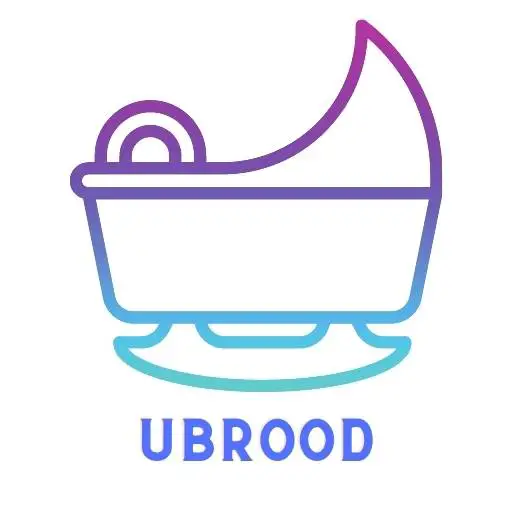Introduction to 24-Month Sleep Regression
If you’re a parent, you might have noticed a sudden change in your toddler’s sleep pattern as they approach their second birthday. This phenomenon, known as the 24-month sleep regression, can be a challenging time for both parents and toddlers. This article aims to help you understand the concept of sleep regression and why it occurs at 24 months.
Understanding the concept of sleep regression
Sleep regression is a period when a baby or toddler, who has been sleeping well, suddenly starts waking up at night and having difficulty falling back to sleep. It’s a completely normal part of childhood development. It’s important to understand that sleep regression is temporary and usually lasts for a few weeks.
Why 24-month sleep regression occurs
At around 24 months, toddlers are experiencing a lot of developmental changes. They’re learning new skills, becoming more independent, and their brain is growing rapidly. All these changes can disrupt their sleep. Another reason for the 24-month sleep regression is the transition from two naps to one. This change in their sleep schedule can cause them to wake up more during the night.
Understanding the 24-month sleep regression can help you navigate this challenging time and ensure your toddler gets the sleep they need. In the following sections, we will discuss how to identify the symptoms of 24-month sleep regression, how long it lasts, and how to deal with it.
Identifying 2 Year Sleep Regression Symptoms
As your toddler reaches the age of two, you may notice some changes in their sleep patterns. This is often referred to as the 24-month sleep regression. Identifying the symptoms of this sleep regression can help you manage it effectively and ensure your child gets the rest they need. Here are some of the most common signs:
Common 24 Month Sleep Regression Signs
- Changes in sleep patterns: One of the first signs of 24-month sleep regression is a noticeable change in your child’s sleep patterns. They may start waking up earlier than usual or have difficulty falling asleep at their regular bedtime.
- Increased night waking: If your child is waking up more frequently during the night, this could be a sign of sleep regression. This can be particularly challenging for parents as it disrupts their own sleep patterns.
- Resistance to bedtime: Toddlers experiencing sleep regression often resist going to bed. They may become more active or show signs of anxiety around bedtime.
Recognizing these signs early can help you take steps to manage your child’s sleep regression and ensure they get the rest they need. Remember, every child is unique and may exhibit different symptoms. If you’re concerned about your child’s sleep patterns, it’s always best to consult with a healthcare professional.
Less Common Symptoms
While the common signs of 24-month sleep regression are changes in sleep patterns, increased night waking, and resistance to bedtime, there are some less common symptoms that parents should be aware of. These symptoms might not be as obvious, but they can still indicate that your child is going through a sleep regression.
Increased Tantrums
One less common symptom of 24-month sleep regression is an increase in tantrums. Your normally calm and composed toddler might suddenly start throwing tantrums more frequently. This can be a result of their disrupted sleep patterns, which can make them feel more irritable and less able to control their emotions. A study published in the Journal of Sleep Research found that children who don’t get enough sleep are more likely to have emotional and behavioral problems, including tantrums.
Changes in Appetite
Another less common symptom is changes in appetite. Your toddler might start eating more or less than usual. This can be due to the fact that sleep and appetite are closely linked. When a child’s sleep is disrupted, it can affect their hunger and fullness hormones, leading to changes in appetite. According to a report from the American Academy of Pediatrics, sleep deprivation can cause changes in the hormones that control appetite, leading to overeating or undereating.
It’s important to note that these less common symptoms may not necessarily mean that your child is going through a sleep regression. They could be signs of other issues, such as illness or stress. Therefore, if you notice these symptoms in your child, it’s a good idea to consult with a pediatrician.

How Long Does 24 Month Sleep Regression Last?
Understanding the duration of 24-month sleep regression is crucial for parents. It helps them prepare and manage this challenging phase effectively. In this section, we will discuss the typical duration of sleep regression and the factors that can affect this duration.
1. Typical Duration of Sleep Regression
Typically, the 24-month sleep regression can last anywhere from 2 to 6 weeks. However, every child is unique, and the duration can vary. It’s important to remember that this is a temporary phase and your child will eventually return to their normal sleep patterns.
2. Factors That Can Affect the Duration
Several factors can influence how long the 24-month sleep regression lasts. These include:
- Child’s temperament: Some children adapt to changes more easily than others. If your child is generally adaptable, the sleep regression phase might be shorter.
- Changes in routine: Any significant changes in your child’s routine, such as starting daycare or moving to a new home, can prolong the sleep regression period.
- Illness: If your child is unwell, it might disrupt their sleep further and extend the sleep regression phase.
- Teething: Teething can cause discomfort and disrupt your child’s sleep, potentially extending the sleep regression period.
Understanding these factors can help you better manage this phase and support your child through it. Remember, patience and consistency are key during this time.
Dealing with Sleep Regression
When your toddler reaches the 24-month mark, sleep regression can become a significant challenge. One of the methods that parents often consider is the ‘Cry It Out’ method. Let’s delve into what this method entails and its pros and cons.
24 Month Sleep Regression Cry It Out Method
What is the cry it out method?
The ‘Cry It Out’ method, also known as the Ferber method, is a sleep training technique where parents allow their child to cry for a specified period before offering comfort. The goal is to help the child learn to self-soothe and fall asleep independently. It’s important to note that this method is not about leaving your child to cry indefinitely, but rather about setting limits and gradually increasing the time between your responses.
Pros and cons of using this method
Like any parenting strategy, the ‘Cry It Out’ method has its pros and cons. Let’s examine them:
| Pros | Cons |
|---|---|
| Can lead to longer sleep durations | Can be emotionally challenging for parents |
| Helps child learn to self-soothe | May not be suitable for all children |
| Can establish a consistent sleep schedule | May lead to increased crying in the short term |
Remember, every child is unique, and what works for one may not work for another. It’s crucial to consider your child’s temperament and your family’s needs before deciding on a sleep training method. Always consult with a healthcare professional if you have concerns about your child’s sleep patterns.

Alternative Methods for Handling Sleep Regression
-
Establishing a Consistent Bedtime Routine
One of the most effective ways to handle sleep regression is by establishing a consistent bedtime routine. This routine can include activities such as bathing, reading a story, and saying goodnight to family members. Consistency is key, as it helps your child understand and anticipate what comes next. According to a study, children who follow a consistent bedtime routine fall asleep faster, sleep longer, and wake up less frequently during the night.
-
Creating a Comfortable Sleep Environment
Another important factor in managing sleep regression is creating a comfortable sleep environment. This can include using a comfortable mattress, maintaining an optimal room temperature, and using blackout curtains to block out any light. A study found that children who sleep in a comfortable environment have fewer sleep disruptions and wake up feeling more refreshed.
-
Using Positive Reinforcement
Positive reinforcement can also be an effective tool in managing sleep regression. This can include praising your child when they sleep through the night, or providing a small reward for consistent good sleep behavior. This method not only encourages good sleep habits, but also helps to build your child’s self-esteem and confidence. A study found that children who receive positive reinforcement for good sleep habits are more likely to maintain these habits in the long term.
Toddler Sleep Problems Beyond 24-Month Sleep Regression
While the 24-month sleep regression is a common issue many parents face, it’s important to recognize that toddlers can experience other sleep problems as well. These issues can persist even after the regression phase has passed. In this section, we will discuss how to identify other sleep issues in toddlers and when it might be necessary to seek professional help.
Identifying other sleep issues in toddlers
Aside from the 24-month sleep regression, toddlers can also face other sleep-related problems. These can include night terrors, sleepwalking, and difficulty falling asleep or staying asleep. It’s crucial to pay attention to your toddler’s sleep patterns and behaviors. For example, if your child frequently wakes up screaming and seems disoriented, they might be experiencing night terrors. If your toddler often gets out of bed and walks around while still asleep, this could be a sign of sleepwalking. Difficulty falling asleep or staying asleep can be a sign of insomnia, which, while rare, can occur in toddlers.
When to seek professional help
While it’s normal for toddlers to experience occasional sleep disturbances, persistent issues that interfere with your child’s sleep or daily life may require professional intervention. If your toddler’s sleep problems persist for several weeks, if they seem excessively sleepy during the day, or if their sleep issues are causing significant distress for them or for the family, it may be time to consult a pediatrician or a sleep specialist. These professionals can provide guidance and treatment options to help improve your toddler’s sleep.
Remember, every child is unique and what works for one might not work for another. It’s important to be patient and persistent in finding solutions that work for your toddler and your family. Sleep is crucial for your toddler’s growth and development, so don’t hesitate to seek help if you’re concerned about your child’s sleep.
Conclusion: Surviving the 2.5 Year Sleep Regression
As we reach the end of our discussion on the 2.5-year sleep regression, it’s important to remember that every child is unique and will experience this phase differently. However, there are some common threads that can help guide parents through this challenging time.
Recap of key takeaways
Firstly, remember that sleep regression at 24 months is a normal part of a child’s development. It’s a sign that your child is growing and their sleep patterns are evolving. The symptoms can include increased night wakings, difficulty falling asleep, and changes in nap times.
Secondly, the duration of sleep regression can vary, but it typically lasts 2-6 weeks. During this time, it’s crucial to maintain a consistent bedtime routine and provide a comforting environment for your child.
Lastly, while sleep regression is challenging, it’s not the only sleep issue that can arise in toddlers. If your child continues to have sleep problems beyond the regression phase, it may be worth seeking advice from a pediatrician or sleep specialist.
Words of encouragement for parents dealing with sleep regression
Parenting is a journey filled with ups and downs, and dealing with sleep regression is just one of the many hurdles you’ll face. It’s important to remember that this phase is temporary and your child will eventually return to their regular sleep patterns.
Stay patient, consistent, and positive. You are doing a great job, and your efforts are not going unnoticed. Your child’s sleep habits will improve, and so will your own. Remember, you are not alone in this journey. Countless parents have walked this path before you and have come out stronger on the other side.
In conclusion, surviving the 2.5-year sleep regression is all about understanding, patience, and consistency. It’s a challenging time, but with the right approach and mindset, you and your child can navigate through it successfully.














